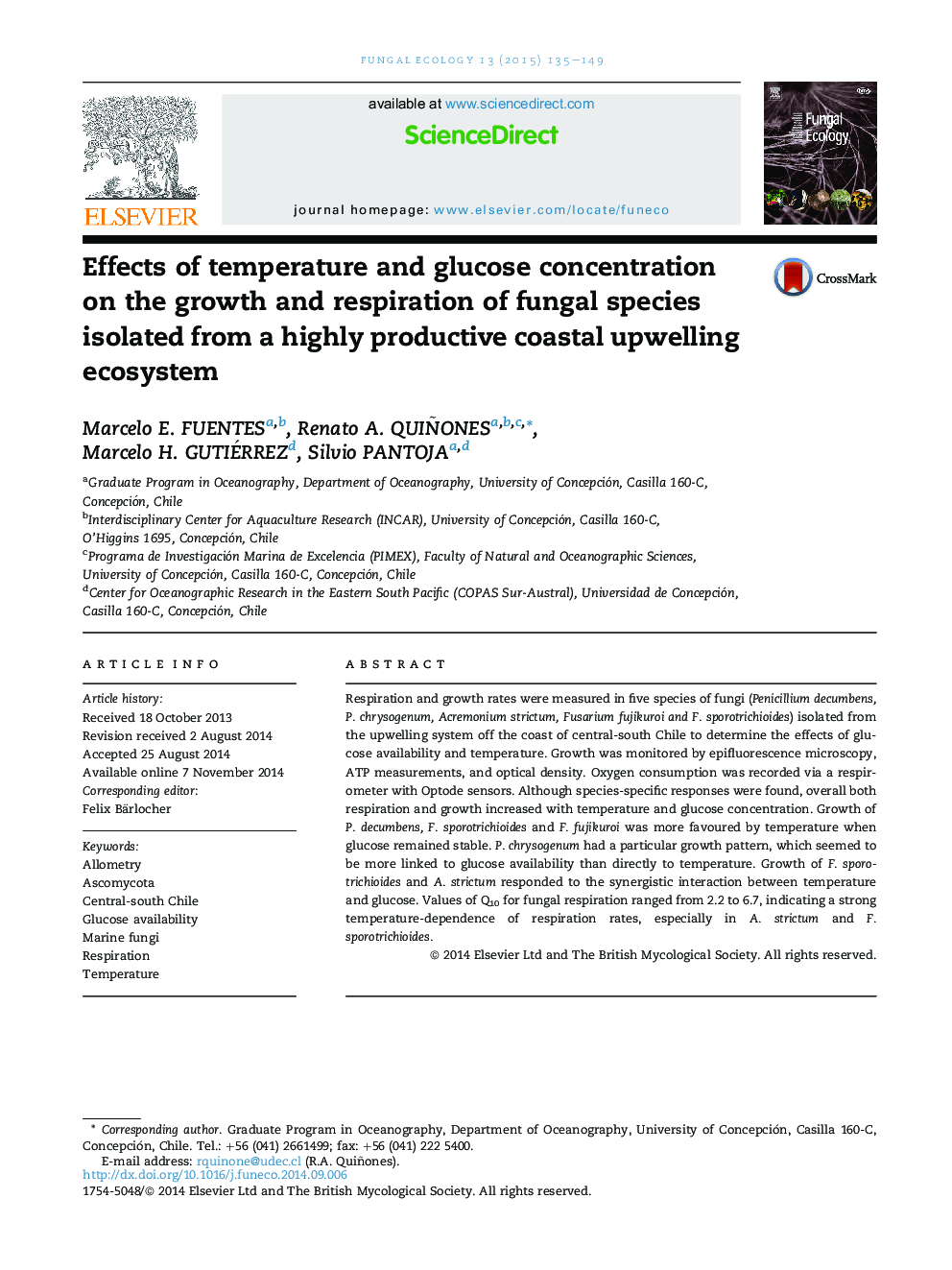| Article ID | Journal | Published Year | Pages | File Type |
|---|---|---|---|---|
| 2053547 | Fungal Ecology | 2015 | 15 Pages |
•Respiration and growth rates of five coastal Ascomycetes species were estimated.•The effects of temperature on growth and respiration of coastal fungi were assessed.•High glucose concentrations stimulate growth rates of coastal filamentous fungi.•Respiration rates and body mass are scaled by a power function with a slope of 0.68.•The allometric slope of specific respiration rate is −0.26.
Respiration and growth rates were measured in five species of fungi (Penicillium decumbens, P. chrysogenum, Acremonium strictum, Fusarium fujikuroi and F. sporotrichioides) isolated from the upwelling system off the coast of central-south Chile to determine the effects of glucose availability and temperature. Growth was monitored by epifluorescence microscopy, ATP measurements, and optical density. Oxygen consumption was recorded via a respirometer with Optode sensors. Although species-specific responses were found, overall both respiration and growth increased with temperature and glucose concentration. Growth of P. decumbens, F. sporotrichioides and F. fujikuroi was more favoured by temperature when glucose remained stable. P. chrysogenum had a particular growth pattern, which seemed to be more linked to glucose availability than directly to temperature. Growth of F. sporotrichioides and A. strictum responded to the synergistic interaction between temperature and glucose. Values of Q10 for fungal respiration ranged from 2.2 to 6.7, indicating a strong temperature-dependence of respiration rates, especially in A. strictum and F. sporotrichioides.
